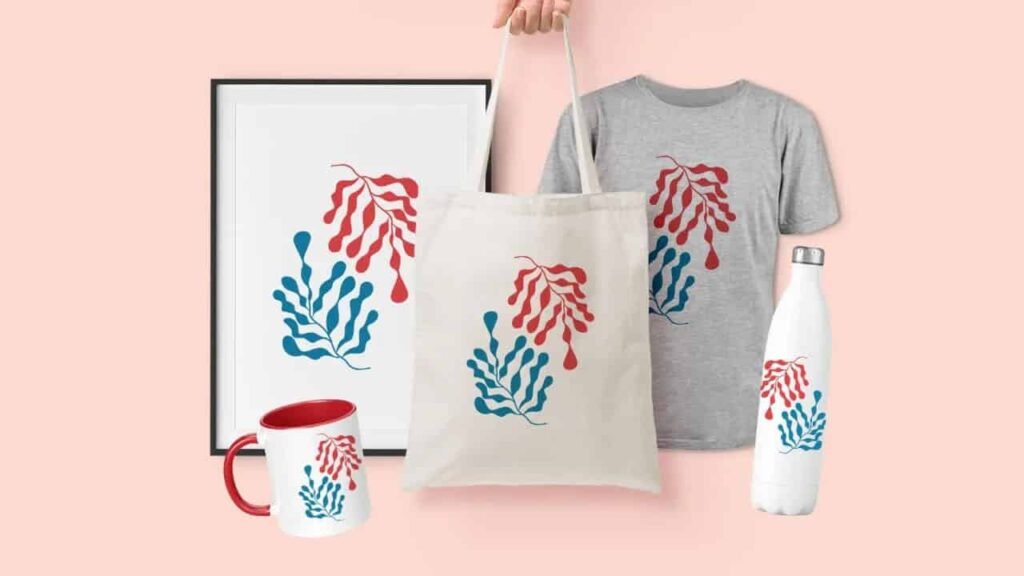The world of e-commerce is constantly evolving, driven by technological advancements and changing consumer preferences. One of the most significant shifts in recent years has been the rise of print-on-demand (POD) services. These services have revolutionized how businesses operate, allowing for greater flexibility, reduced risk, and a more personalized shopping experience for consumers. As we look ahead, it’s clear that print-on-demand products are not just a passing trend but a permanent fixture in the e-commerce landscape. In this article, we will explore why print-on-demand is here to stay and how it shapes online retail’s future.
The Rise of Customization and Personalization
Among the key drivers of print-on-demand business success, one more should be mentioned: the increasing trend in personalization. Today’s consumers’ needs and wants are different from those of the previous generation in that they do not want commodity-like products.
Consumers yearn for products that are special and different in ways that are meaningful to them. This need is met by print-on-demand services where the customer can create their design and have it printed on the product of their choice, such as t-shirts, hoodies, and mugs. Such selectivity promotes a closer relationship between the consumer and the product, making the customers more inclined to continue purchasing the particular product and be constant clients of the company.
Third, print-on-demand enables businesses to have a diverse system of products made available for sale without the need for bulk stocks. This flexibility enables retailers to easily adapt to fashion trends and the needs of their clients and, therefore, provide new designs and products once they are required. This agility is a major boon in the dynamic environment of e-commerce, where the ability to make changes in response to market trends and requirements can be the key to success or failure.
Lower Risk and Cost Efficiency
The last but not the least essential factor concerning print-on-demand as one of the most popular and indispensable types of e-commerce is that it involves lower risk when it comes to funding. Physical storefront retailing has the downside of making significant initial investments in product stock, which can be prohibitive for new start-ups.
In this system, products are not printed in advance; instead, they are printed as soon as an order is placed. This means that retailers do not have to invest heavily in their initial stock and are not taking the risk on not selling it. It is especially useful for those who are interested in new products and services that they would like to try on the market but would not like to invest heavily in them.
The same goes to operational costs, where print-on-demand offers great efficiency in spending. Since businesses do not have to stock or maintain large inventory levels, they are spared the costs of storage and stock disposal. The streamlining also serves the organizational purse and is well-positioned to tap into the increasing consumer consciousness of environmentally sustainable business models. This means less material wasted, less energy expended on transportation and packaging, and a more sustainable way forward for the online shopping industry.
Technology and Integration – The Potential
Technological development enabling print-on-demand services has also supported the growth of print-on-demand. For instance, other advanced printing techniques, like direct-to-garment (DTG) printing, have enhanced the customization aspect of a product. These technologies allow the designs to be printed precisely, producing high-quality and durable products that will satisfy customers.
Not only that, but combining print-on-demand services with famous e-shops, such as Shopify, WooCommerce, or Etsy, has made it even simpler for businesses to provide customization. These integrations make the whole process from the production of the products to the delivery of the orders efficient, thus freeing business entities the time for marketing and customer acquisition. With these technological advancements, print-on-demand services can expand commercially and meet the demands of even small businesses and large corporations.
Meeting Consumer Expectations
Modern consumers are impatient and want quality products delivered quickly and with minimal effort. Print-on-demand serves these expectations through smooth purchasing channels. Bottom-up communication is very effective for customers since they can easily order customized products from the comfort of their homes in a short time and be assured of delivery as soon as possible. These benefits, coupled with the ability to build distinct products, improve customer satisfaction and, hence, increase the chances of customers coming back.
Second, the fact that e-commerce operates globally allows businesses to sell to customers anywhere in the world, providing products for print-on-demand markets. For this reason, the website is accessible from across the globe, thereby providing a unique opportunity for expanding the market.
Conclusion
With the continued advancement of e-commerce, it is possible to acknowledge the link and dependency between the two and print-on-demand services. People always want specific items rather than mass products, and the POD model is financially safe and cheap for companies. The availability of sophisticated technology and the ability to integrate with e-commerce platforms make it possible to continue expanding the use and popularity of print-on-demand in online retailing.











